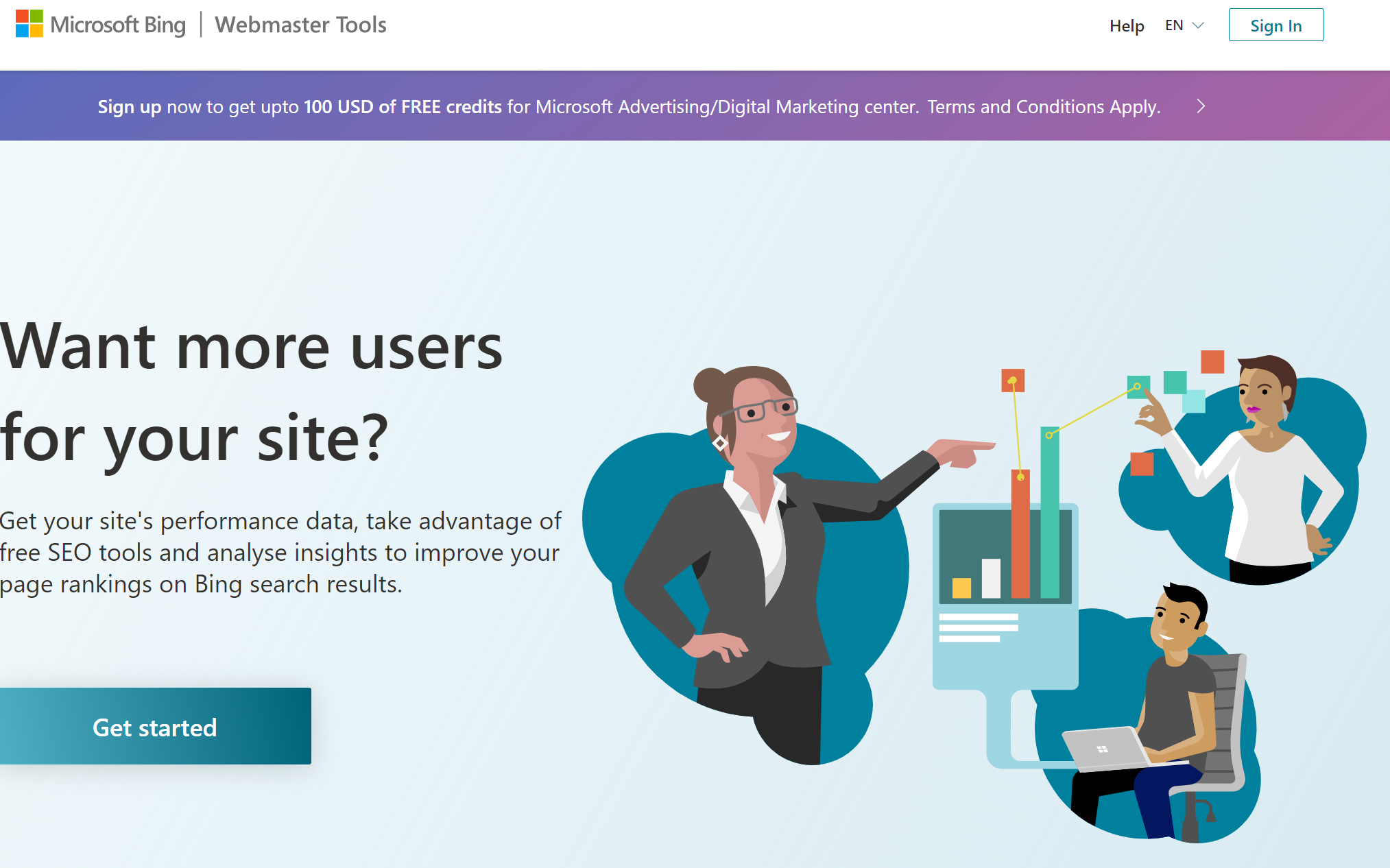While many webmasters focus on acquiring more external links, it’s easy to forget that internal link building is still a great way to boost the rankings of other pages within your website. Internal links can be an untapped goldmine and the best part is you have complete control over their implementation.
Category: SEO
All news related to SEO (Search Engine Optimization).
-

How to Keep Your Search Engine Ranking During a Redesign
301 redirects are essential when you’re redesigning your website and don’t want to lose the search engine traffic that you currently enjoy.
The unfortunate thing about a 301 redirect is that it sounds so extremely geeky and off-putting to the average business owner that they’re scared away. That’s too bad, because it is a critical tool in search engine optimization. So, to that end, I’m going to attempt explain the benefits of 301s in the least geeky way possible.
Search Engines and Trust
There are a lot of variables in why one site ranks higher than another site at Google and other search engines. One is how long the site (and a given page) has been in existence, and another is how many incoming links a page has. All things being equal (which they never are), older pages rank higher than newer pages and pages with more inbound links rank higher than ones with fewer inbound links.
Breaking that Trust
Often, when rebuilding a site, you end up changing the URLs–or addresses–of your web pages. Maybe it’s because you’re reorganizing your site, or maybe it’s because you’re redeveloping your site on a content management system like WordPress, Drupal or Joomla. In either case, the new URLs don’t have the trust that the old URLs do, even if a lot of the content is the same.
It’s like moving to a new town. You may have been the greatest manager/plumber/accountant in your old town, but that doesn’t mean anything in the new town. You haven’t changed; you still have an excellent bedside manner or mad sales skills, but you’re starting from scratch in this new town.
When you take your established content, uproot it and replant it somewhere else on your site, you are resetting the clock on when that content was created and breaking all of the inbound links that pointed to it.
Reestablishing that Trust
There are many ways to tell the search engines that you’ve moved your content, but the most search engine friendly way is the 301 redirect. By setting up 301 redirects for your content, you show search engines where your content has moved from, and your inbound links will now direct to your new pages.
How you setup your 301s may depend on the type of host you have. If you have no idea what I’m talking about, it’s time to talk to your web developer and get them involved.
If you want your web developer to create redirects for you, I recommend writing up a guide for him or her to show where the old pages should be redirected. Here’s a guide for you to use, where the first item is the old page and the second item is where you want the traffic to flow:
• old/old.html -> new/new.php
• van-halen/david-lee-roth.html -> van-halen/sammy-hagar.html
• wonka/gene-wilder.php ->wonka/johnny-depp.phpThe easiest approach is to use a plugin like the WordPress Redirection plugin to setup 301 redirects.
If you do feel comfortable playing around with 301 redirects, .htaccess and other files on your server, there are plenty of resources online:
• How to Redirect a Web Page Using a 301 Redirect
• 301 Redirect – How to Create Redirects
• How to Set Up Redirects Using .htaccess
These are just a few of the top results.
Final Thoughts
301 redirects are also great when you are changing from one domain to another (never a great idea, but sometimes a necessary evil.) Even with a 301 redirect, you should expect a dip during a major overhaul of your website. However, my own experience has been that the numbers get back to normal in about a month or three and then you see increases after that.
-

Improve SEO By Removing Your Duplicate Content
Duplicate content is like a virus. When a virus enters your system, it begins to replicate itself until it is ready to be released and cause all kinds of nasty havoc within your body. On the web, a little duplicate content isn’t a huge problem, but the more it replicates itself, the bigger the problem you’re going to have. Too much duplicate content and your website will come down with some serious health issues.
I’m going to break this into three parts. In this post, I’ll discuss the problems that are caused with duplicate content. In Part II, I’ll address the causes of duplicate content, and in Part III, I’ll discuss some duplicate content elimination solutions.
Duplicate Content Causes Problems. Duh!
Google and other search engines like to tell us that they have the duplicate content issue all figured out. And, in the cases where they don’t, they provide a couple of band-aid solutions for you to use (we’ll get to these later). While there may be no such thing as a “duplicate content penalty”, there are certainly filters in place in the search engine algorithms that devalue content that is considered duplicate, and make your site as a whole less valuable in the eyes of the search engines.
If you trust the search engines to handle your site properly, and don’t mind having important pages filtered out of the search results, then go ahead and move on to another story… you got nothing to worry about.
Too many pages to index
Theoretically, there is no limit to the number of pages on your site that the search engines can add to their index. In practice, though, if they find too much “junk”, they’ll stop spidering pages and move on to the next site. They may come back and keep grabbing content they missed, but likely at a much slower pace than they otherwise would.
Duplicate content, in practice, creates “junk” pages. Not that they may not have value, but compared to the one or two or dozen other pages on your site or throughout the web that also contain the same content, there really isn’t anything unique there for the search engines to care about. It’s up to the engines to decide which pages are the unnecessary pages and which is the original source or most valuable page to include in the search results.
The rest is just clutter that the search engines would rather not have.
Slows search engine spidering
With so many duplicate pages to sort through, the search engines tire easily. Instead of indexing hundreds of pages of unique content, they are left sifting through thousands of pages of some original content and a whole lot of duplicate crap. Yeah, you’d tire too!
Once the engines get a whiff that a site is overrun with dupes, the spidering process will often be reduced to a slow crawl. Why rush? There are plenty of original sites out there they can be gathering information on. Maybe they’ll find a few good nuggets or two on your site, but it can wait, as long as they are finding gold mines elsewhere.
Splits valuable link juice
When there is more than one page (URL) on your site that carries the same content as another there becomes an issue of which page gets the links. In practice, whichever URL the visitor lands on and bookmarks, or passes on via social media, is the page that gets the link value. But, each visitor may land on a different URL with that same content.
If 10 people visit your site, 5 land on and choose to link to one URL, while the other 5 land on and choose to link to the other (both being the same content), instead of having one page that has 10 great links, you have 2 pages each with half the linking value. Now imagine you have 5 duplicate pages and the same scenario happens. Instead of 10 links going to a single page, you may end up with 2 links going to each of the 5 duplicate versions.
So, for each duplicate page on your site, you are cutting the link value that any one of the pages could achieve. When it comes to rankings, this matters. In our second scenario, all it takes, essentially, is a similarly optimized page with 3 links to outrank your page with only 2. Not really fair, because the same content really has 10 links, but it’s your own damn fault for splitting up your link juice like that.
Inaccessible pages
We talked above about how duplicate content slows spidering leaving, some content out of the search engine’s index. Leaving duplicate content aside for a moment, let’s consider the page URLs themselves. We’ve all seen those URLs that are so long and complicated that you couldn’t type one out if it was dictated to you. While not all of these URLs are problematic, some of them certainly can be. Not to mention URLs that are simply undecipherable as being unique pages.
We’ll talk more about these URLs in part 3, but for now, let’s just consider what it means when a URL cannot be spidered by the search engines. Well, simply put, if the search engines can’t spider it, then it won’t get indexed. The browser may pull open a page the visitors can see, but the search engines get nothin’. And when you multiply that nothin’ the search engines get with the nothin’ they’ll show in the results (don’t forget to carry the nothin’), you get a whole lot of nothin’ going on.
Pages inaccessible to the search engines means those pages can’t act as landing pages in the search results. That’s OK, if it’s a useless page, but not if it’s something of value that you want to be driving traffic to.
There are a lot of problems caused by duplicate content and bad URL development. These problems may be minor or cataclysmic, depending on the site. Either way, small problem or large, it’s probably a good idea to figure out the cause of your duplicate content problems so you can begin to implement solutions that will pave the way for better search engine rankings.
-

Bing’s Guide To Quality Content
Following the Google’s Panda slap, now Bing reasserts it’s stand for quality content as well.
When we think of quality content, Google Search is our the first automated response. However, to reinstate it’s position, Bing’s, Duane Forrester’s blog gives webmasters some tips and tricks to creating quality content to ensure that both the users and the search engines respond to your website.
Unlike Google, that has left webmasters across the globe in murky waters of Reconsider Request, Bing seems to provide us with rather quick and easy to follow pointers that will easily make their crawler conclude that your website has quality content.
Following are the steps Bing suggests you avoid whilst producing content:
“Duplicate content” – don’t use articles or content that appear in other places. Produce your own unique content.
Thin content – don’t produce pages with little relevant content on them – go deep when producing content – think “authority” when building your pages. Ask yourself if this page of content would be considered an authority on the topic.
All text/All images – work to find a balance here, including images to help explain the content, or using text to fill in details about images on the page. Remember that text held inside an image isn’t readable by the crawlers.
Being lonely – enable ways for visitors to share your content through social media.
Translation tools – rarely does a machine translation tool leave you with content that reads properly and that actually captures the original sentiment. Avoid simply using a tool to translate content from one language to the next and posting that content online.
Skipping proofreading – when you are finished producing content, take the time to check for spelling errors, grammatical mistakes and for the overall flow when reading. Does it sound like you’re repeating words too frequently? Remove them. Don’t be afraid to rewrite the content, either.
Long videos – If you produce video content, keep it easily consumable. Even a short 3 – 4 minute video can be packed with useful content, so running a video out to 20 minutes is poor form in most instances. It increases download times and leads to visitor dissatisfaction at having to wait for the video to load. Plus, if you are adding a transcription of your video, even a short video can produce a lengthy transcription.
Excessively long pages – if your content runs long, move it to a second page. Readers need a break, so be careful here to balance the length of your pages. Make sure your pagination solution doesn’t cause other issues for your search optimization efforts, though.
Content for content’s sake – if you are producing content, be sure its valuable. Don’t just add text to every page to create a deeper page. Be sure the text, images or videos are all relevant to the content of the page.”
When looking to optimize your website this comprehensive list of ‘don’t’ seems like a good place to start from. However, some skeptics may question the reason behind Bing emphasis on quality at this juncture; is this guide any early indication towards Bing’s version of Google like Panda update? Hmmm…
